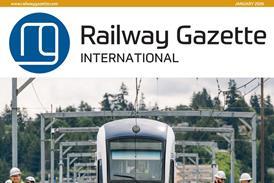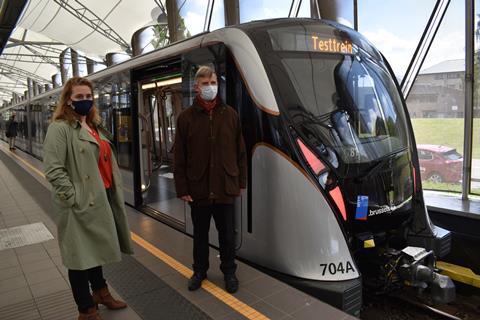
BELGIUM: Brussels metro operator STIB has officially launched its M7 series trainsets into operation, with CEO Brieuc Meeûs d’Argenteuil and the capital region’s Minister of Mobility Elke van den Brandt taking invited guests for a short ride on the first unit from Erasmus station on Line 1.
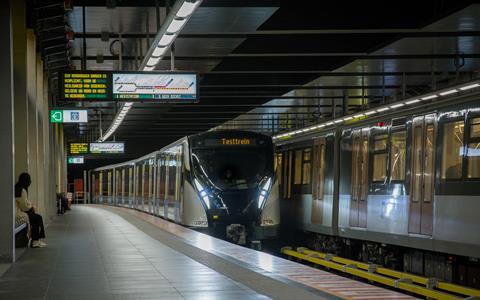
Up to 43 trains are being supplied by CAF under a 12-year framework contract, awarded in 2016. The 94 m long through-gangwayed M7 is a derivative of the earlier M6 design. A pre-series trainset arrived at Haren depot in July 2020, and four units have now been delivered. Following extensive testing, the trains are expected to enter passenger service in the summer.
The first 22 trains have been ordered to increase the capacity of the existing network, and all are due to arrive by the end of 2022. The next batch will follow when the north-south pre-metro Line 3 between Albert to Nord Station is converted from tram operation to a driverless metro and extended north to Bordet.
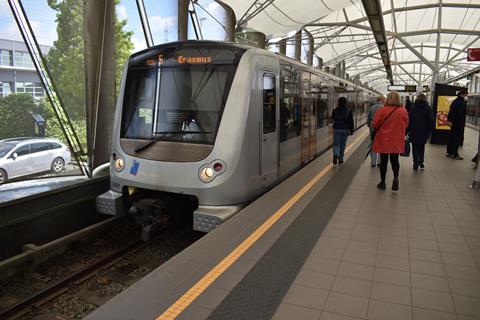
Conversion work is already underway in the premetro tunnels each night. The platforms at the underground stations are being lengthened and raised to 1 030 mm above rail to suit the metro trainsets, while a 900 V DC third-rail power supply is being installed. This work is expected to be completed by mid-2025, with the extension to Bordet now projected to open around 2030. In the longer term, a southern extension would take Line 3 to Ukkel.
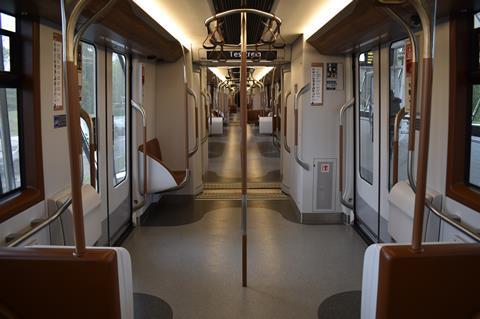
Fleet evolution
The original Brussels metro fleet consists of 53 two-car and 37 three-car units of types M1 to M5 built by Bombardier and Alstom between 1976 and 1999, plus the 21 six-car M6 sets delivered by CAF in 2007-08 which have Elin traction equipment and TSA motors.
The M7 sets are due to be introduced on lines 1 and 5, alongside the M6 units. This will displace older stock to lines 2 and 6, allowing frequencies to be increased on both routes. STIB anticipates that this will raise the capacity of lines 1 and 5 by 5 000 passengers/h and that of lines 2 and 6 by 3 000 when all 22 sets have been commissioned.
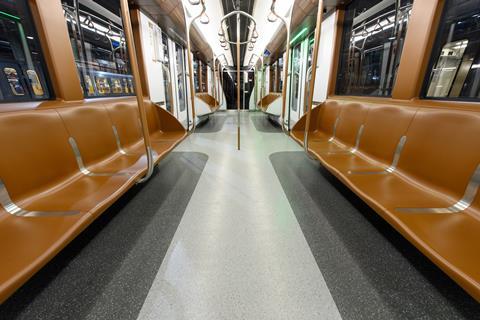
There are a number of differences between the M6 and M7 trainsets. In particular, the newer sets are formed as a single six-car train, and the ability to split a formation in two using separate auxiliary controls at the centre of the train has not been retained. Removal of the hostler cabs has increased the capacity of each train from 728 to 742 passengers, with around 200 seated and the rest standing at 4/m².

The M7 has been re-designed by Antwerpen-based design agency Yellow Window, and the seats have leather covers as used on STIB’s T3000 and T4000 trams, which has had a positive impact in reducing vandalism. The ventilation and air-conditioning system has also been enhanced.
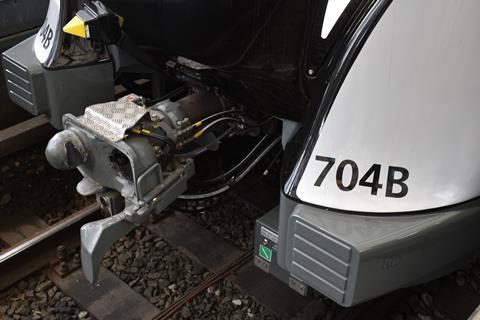
The floor height has been lowered from 1 060 to 1 030 mm above rail to match the station platforms and give level boarding, while the doorways have been widened from 1 450 mm to 1 600 mm. Each train has 18 sets of doors per side, supplied by IFE. Green LED indicators signal when the doors are open, changing to red to warn closure is imminent.
The M7s have four motored cars and two trailer vehicles, with CAF IGBT controls and asynchronous traction motors supplied by ABB from Sweden. The trains are designed for retrofitting with the new Hitachi Rail CBTC which is being installed to ultimately permit driverless operation. Testing of the new signalling is expected to start in 2023.
| Principal data for Brussels M7 metro trainsets | |
|---|---|
| Length m | 94·0 |
| Width mm | 2 700 |
| Weight (empty) tonne s | 170 |
| Floor height mm | 1 030 |
| Axle configuration | Bo’+Bo’, 2’+2’, Bo+’Bo’, Bo’+Bo’, 2’+2’, Bo’+Bo’ |
| Distance between bogie centres mm | 9 000 |
| Bogie wheelbase mm | 2 200 |
| Wheels diameter mm (new/worn) | 830/760 |
| Traction motors | 16 x 135 kW |
| Maximum speed km/h | 80 |
| Specific weight kg/m² | 670 |
| Specific power kW/t | 12·7 |



